- Home
- /
- Detox
- /
- Toxins
- /
- The Dirty Dozen and...
- /
- The Dirty Dozen and...
- 1. Unveiling the Mechanisms: How the Dirty Dozen Impacts Your Body
- 2. The list of dirty dozen: who does it make?
- 3. The Dirty Dozen Most Dangerous Products Categories
- 4. The Dirty Dozen and 15 th Clean Fruits and Vegentables 2023
- 5. The Body’s Threshold: Navigating the Challenge of the Dirty Dozen
- 6. Recommendations Amidst the Dirty Dozen
In a world inundated with products vying for our attention, the Dirty Dozen and Clean Dozen emerge as guides, urging us to look beyond the surface and scrutinize the contents of our daily essentials. These lists, meticulously curated by organizations dedicated to environmental and public health, are a testament to the dynamic relationship between consumers and the products they embrace.
The Dirty Dozen, a compilation of products laden with potential hazards and harmful chemicals, acts as a stark reminder of the shadows that can lurk behind seemingly innocuous items. From personal care products to the food on our plates, the Dirty Dozen challenges us to confront the unseen and make informed choices about the substances we willingly invite into our lives.
On the flip side, the Clean Dozen offers a breath of fresh air—a collection of products designed with an emphasis on safety, sustainability, and conscientious manufacturing. These items represent a conscious shift towards a lifestyle that harmonizes with the environment and nurtures individual well-being.
In this exploration, we delve into the stories behind these lists, unraveling the methodologies employed by organizations to assess the safety and impact of products. We’ll navigate the ever-evolving landscape of consumer awareness, understanding the motivations that drive us to choose one product over another and the implications of those choices.
Beyond the labels and marketing strategies, the Dirty and Clean Dozen beckon us to become conscientious custodians of our health and the environment. Join us as we embark on a quest for a balanced, informed, and purposeful lifestyle—one where our choices not only define our well-being but also contribute to a world that thrives on conscious consumerism.
1. Unveiling the Mechanisms: How the Dirty Dozen Impacts Your Body
While the Dirty Dozen encompasses a variety of products, their impact on the body often shares common mechanisms rooted in the presence of harmful chemicals and toxins. Here, we unravel the intricate ways in which these products can influence our health.
1.1. Bioaccumulation
Toxins present in Dirty Dozen products can accumulate in the body over time. Through repeated exposure, these substances may surpass the body’s ability to eliminate them, leading to a gradual build-up of harmful compounds.
1.2. Endocrine Disruption
A significant number of Dirty Dozen products contain endocrine-disrupting chemicals. These substances interfere with the endocrine system, disrupting the delicate balance of hormones in the body. Such disruptions can contribute to reproductive issues, hormonal imbalances, and even impact the development of certain organs.
More about reproductive health read in the article: Healthy Lifestyle and Reproductive Health: To Parenthood Without Obstacles
More about endocrine disruptors read in the article: Endocrine Disruptors: the Silent Threat
1.3. Inflammatory Responses
Exposure to toxins triggers inflammatory responses within the body. Chronic inflammation, a common outcome of prolonged exposure to harmful substances, has been linked to a myriad of health issues, including cardiovascular diseases, diabetes, and neurodegenerative conditions.
1.4. Oxidative Stress
Many of the chemicals found in Dirty Dozen products induce oxidative stress. This occurs when the balance between free radicals and antioxidants is disrupted, potentially leading to damage at the cellular level and contributing to the development of chronic diseases.
1.5. Genetic and Epigenetic Effects
Certain toxins can impact genes and their expression, influencing genetic and epigenetic processes. These changes may increase susceptibility to diseases or alter the body’s response to environmental factors.
1.6. Respiratory and Dermal Exposure
Products like household cleaners and personal care items from the Dirty Dozen can contribute to respiratory issues and skin irritations. Inhaling or coming into direct contact with these substances exposes the body to potential harm.
1.7. The Domino Effect: Interconnected Consequences
It’s important to recognize that these mechanisms often operate in tandem, creating a domino effect that can manifest as a range of health issues. The interconnected nature of these influences underscores the importance of adopting a holistic approach to minimize exposure to Dirty Dozen products and promote overall well-being.
By understanding these intricate mechanisms, consumers can make informed choices, opting for products that prioritize health and safety. As we unveil the impact of the Dirty Dozen on our bodies, it becomes clear that proactive measures are essential for navigating a landscape laden with potential health hazards.
2. The list of dirty dozen: who does it make?
The Dirty Dozen, a comprehensive list shedding light on products harboring potential health risks, is the brainchild of the Environmental Working Group (EWG). Established in 1993, the EWG is a non-profit organization dedicated to empowering consumers and advocating for environmental and public health.
2.1. Champions of Transparency: Environmental Working Group
What the main idea of Environmental Working Group Activity
The EWG was founded on the principle that access to information empowers individuals to make informed decisions about the products they use and the food they consume.
Research and Analysis
The organization conducts extensive research and analysis on a wide range of consumer products, from personal care items to food and household goods.
The Dirty Dozen
One of the flagship initiatives of the EWG is the Dirty Dozen list, which highlights products and substances containing harmful chemicals. This list serves as a tool for consumers to navigate the complex landscape of product safety.
2.2. How does the Dirty Dozen work
a. Scientific Rigor
The EWG employs a team of scientists, researchers, and experts who rigorously assess scientific literature and data to identify potential hazards associated with various chemicals.
b. Regular Updates
The Dirty Dozen is not a static compilation. It undergoes regular updates to reflect emerging research findings and shifts in consumer product safety.
c. Advocacy for Policy Change
Beyond consumer awareness, the EWG actively engages in advocacy efforts to bring about policy changes that promote safer products and stricter regulations on harmful chemicals.
3. The Dirty Dozen Most Dangerous Products Categories
The Dirty Dozen encompasses a diverse range of products, each associated with potential health hazards due to the presence of harmful chemicals or toxins. Here’s a list of 12 products that have been part of the Dirty Dozen at various times:
3.1. Household Cleaners
– Many conventional cleaners contain chemicals like ammonia, bleach, and phthalates, linked to respiratory and skin issues.
3.2. Personal Care Products
– Cosmetics, shampoos, and lotions may contain endocrine-disrupting chemicals such as parabens and phthalates, impacting hormonal balance.
More about endocrine-disruptors in cosmetics read in the article: Xenobiotics in Cosmetics: Unveiling the Hidden Risks
3.3. Pesticide-Laden Produce
– Certain fruits and vegetables, when heavily sprayed with pesticides, can expose consumers to harmful residues.
3.4. Non-Stick Cookware
– Cookware coated with per- and polyfluoroalkyl substances (PFAS) has raised concerns due to potential health risks associated with PFAS exposure.
3.5. Plastic Food Containers
– Phthalates, found in some plastics, can leach into food and beverages, posing a risk to human health.
3.6. Conventional Meat and Dairy
– Some animal products may contain antibiotics, hormones, and pesticides used in conventional farming practices.
3.7. Glyphosate-Contaminated Foods
– Foods made with conventionally grown, genetically modified crops may contain glyphosate, a herbicide linked to health concerns.
3.8. Bisphenol-A (BPA) in Canned Foods
– BPA, found in the lining of some canned goods, has been associated with endocrine disruption.
3.9. Flame Retardant Chemicals
– Furniture, electronics, and certain textiles may contain flame retardant chemicals, linked to potential health risks.
3.10. Air Fresheners
– Some air fresheners contain volatile organic compounds (VOCs) that can contribute to indoor air pollution.
3.11. Artificial Fragrances
– Found in various products, artificial fragrances may contain phthalates and other potentially harmful chemicals.
3.12. Plastic Toys
– Certain children’s toys made from plastic may contain phthalates and other chemicals of concern.
4. The Dirty Dozen and 15 th Clean Fruits and Vegentables 2023
As we embark on a new year, the dichotomy between the “Dirty” and “Clean” lists continues to shape our consumer choices and health-conscious decisions. These lists, meticulously curated by organizations dedicated to public and environmental well-being, serve as guides in navigating the labyrinth of products that populate our daily lives. In 2023, the Dirty list highlights products laden with potential hazards, urging us to be vigilant about the substances we expose ourselves to. Conversely, the Clean list offers a breath of fresh air, showcasing products that prioritize safety, sustainability, and overall health. Join us on a journey through the intricate landscape of consumer awareness as we explore the products that made their mark on the Dirty and Clean lists in 2023.
4.1. The Dirty Dozen Fruits and Vegetables 2023
- Strawberries
- Spinach
- Kale, collard and mustard greens
- Peaches
- Pears
- Nectarines
- Apples
- Grapes
- Bell & hot peppers
- Cherries
- Blueberries
- Green beans
4.2. The Clean 15 Fruits and Vegetables 2023
- Carrots
- Watermelon
- Sweet potatoes
- Mangoes
- Mushrooms
- Cabbage
- Kiwi
- Honeydew melon
- Asparagus
- Sweet peas (frozen)
- Papaya
- Onions
- Pineapple
- Sweet corn
- Avocados
It’s essential to acknowledge that not all products within a dirty or clean category fall under the Dirty Dozen umbrella. Organic and sustainably sourced options can be beacons of cleanliness amidst potential hazards. The Clean Dozen paradigm extends to include products grown and manufactured with a commitment to environmental stewardship and health consciousness. In the case of strawberries, opting for organic varieties allows consumers to enjoy the sweetness of this fruit without the residues of harmful pesticides, exemplifying that within every category, there exist shades of clean choices. This nuance invites consumers to explore and discern, reinforcing the idea that even within commonly flagged categories, there’s room for informed and wholesome selections.
5.1. A Delicate Balance
Our bodies are remarkably resilient, equipped with intricate defense mechanisms designed to manage and process a myriad of substances encountered in our daily lives. However, the influx of products from the Dirty Dozen poses a unique challenge to this delicate equilibrium. Understanding the body’s threshold for handling these potentially harmful substances is crucial for making informed decisions about our well-being.
5.2. Adaptive Responses
a. Detoxification Pathways
The liver, kidneys, and other organs work tirelessly to detoxify the body. These organs employ enzymatic processes to break down and eliminate toxins, helping to maintain internal balance.
b. Cellular Repair Mechanisms
Our cells have mechanisms for repairing damage caused by exposure to harmful substances. DNA repair processes and cellular regeneration play a vital role in mitigating the impact of toxins.
To make an appointment with our functional nutritionist to get the help in detoxification and cellular repair mechanisms follow thiis link
c. Immune System Vigilance
The immune system acts as a vigilant defender, identifying and neutralizing potential threats. However, chronic exposure to Dirty Dozen products may overwhelm the immune system, compromising its ability to respond effectively.
5.2. Limits of Adaptation
a. Cumulative Effect
The body’s ability to adapt has limits, especially when faced with continuous exposure to toxins. The cumulative effect of long-term exposure may surpass the body’s capacity to maintain optimal function.
b. Genetic Variability
Individual genetic variations contribute to differences in how people metabolize and respond to toxins. Some individuals may be more resilient, while others could be more susceptible to the adverse effects of Dirty Dozen products.
c. Environmental Factors
External factors, such as overall environmental pollution and lifestyle choices, can exacerbate the challenges posed by Dirty Dozen products. These factors add an extra layer of complexity to the body’s ability to cope.
5.3. Empowering Through Awareness
While our bodies possess remarkable adaptive mechanisms, the ever-expanding list of products in the Dirty Dozen highlights the importance of proactive consumer choices. Being mindful of the cumulative impact, individuals can take steps to reduce exposure, opting for cleaner alternatives and fostering an environment that supports the body’s natural ability to thrive.
In a world where the Dirty Dozen challenges our well-being, informed decisions and a commitment to health-conscious living become essential tools in safeguarding our most precious asset – our health.
6. Recommendations Amidst the Dirty Dozen
6.1. Empowerment Through Choices
In the face of the challenges posed by the Dirty Dozen, individuals have the power to make choices that promote a healthier lifestyle. These recommendations aim to empower you to navigate the complex landscape of consumer products while prioritizing your well-being.
a. Prioritize Organic and Locally Sourced Foods
Opt for organic produce and locally sourced foods to reduce exposure to pesticides and contaminants commonly found in conventionally grown products.
b. Choose Clean Personal Care Products
Select personal care items with transparent ingredient lists, avoiding products containing parabens, phthalates, and other potentially harmful chemicals. Explore clean and natural alternatives.
c. Mindful Cleaning Practices
Embrace eco-friendly and non-toxic cleaning products to maintain a healthy indoor environment. Check labels for harmful chemicals and choose products that prioritise environmental safety.
d. Conscious Consumerism
Stay informed about the Dirty Dozen and Clean lists. Regularly check updates from organizations like the Environmental Working Group to make conscious choices about the products you bring into your home.
e. Reduce Plastic Usage
Minimize exposure to phthalates and other harmful chemicals by reducing the use of plastic products. Opt for alternatives like glass or stainless steel for food storage and beverages.
f. Natural Fragrance Alternatives
Choose products with natural fragrances or opt for fragrance-free options to avoid exposure to potentially harmful chemicals found in artificial scents.
g. Support Sustainable Brands
Explore products from brands committed to sustainability and ethical practices. Supporting companies with a focus on environmental responsibility contributes to a healthier planet and, by extension, a healthier you.
i. Stay Hydrated with Clean Water
Ensure access to clean and safe drinking water. Invest in a water filter to reduce potential contaminants, and stay adequately hydrated for overall health.
k. Regular Health Check-ups
Schedule regular health check-ups to monitor your well-being. Keeping abreast of your health status allows for early detection and intervention if needed.
l. Cultivate a Toxin-Free Home Environment
Create a toxin-free living space by using natural air purifiers, avoiding unnecessary chemical products, and incorporating indoor plants that can help improve air quality.
By embracing these recommendations, individuals can proactively contribute to their health and well-being while navigating the challenges posed by the Dirty Dozen. Informed choices and a commitment to a healthier lifestyle lay the foundation for a resilient and thriving life.
Conclusion: A Call to Conscious Consumerism
As we conclude our exploration into the realms of the Dirty Dozen and Clean Dozen, a resounding call to conscious consumerism echoes through the choices we make. These lists, while emblematic of potential hazards and safer alternatives, extend beyond mere labels—they symbolize the power we hold as individuals to shape the trajectory of our well-being and the planet we call home.
Unveiling Values in Products
The Dirty Dozen challenges us to question, to scrutinize, and to demand transparency. It beckons us to be vigilant custodians of our health, urging a critical examination of the substances we willingly embrace in our daily lives. It underscores the importance of staying informed, of being aware of the potential hazards that may lurk behind the allure of convenience.
Echoes of Conscious Consumerism
On the flip side, the Clean Dozen extends an invitation to embrace products that align with our values—a celebration of companies and practices that prioritize health, ethical manufacturing, and environmental sustainability. It is a reminder that every purchase is a vote—a vote for a world where well-being is paramount, and the products we choose contribute to a thriving ecosystem.
Forging a Path to a Better Future
As we stand at the crossroads of consumer choices, let us carry forward the lessons learned from the Dirty and Clean Dozen. Let our decisions be infused with mindfulness, let our preferences be guided by knowledge, and let our voices be a catalyst for change. In this interplay of lists and labels, let us forge a path towards a future where conscious consumerism is not just a choice but a collective commitment to a healthier, more sustainable world.
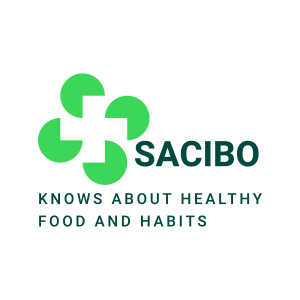








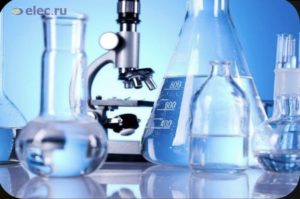





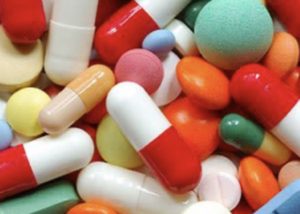

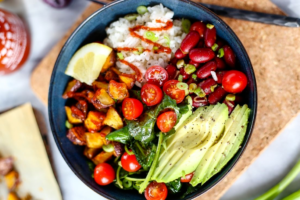










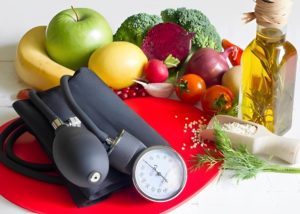











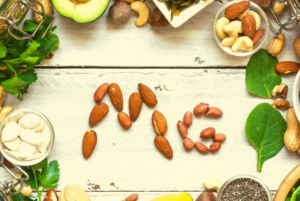
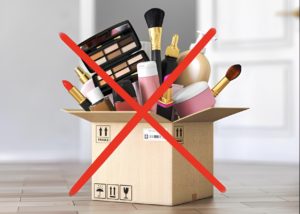









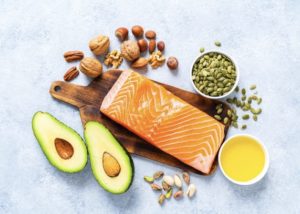










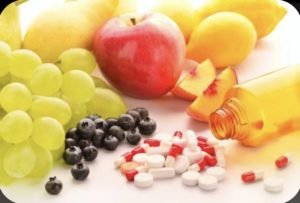

0 Comments